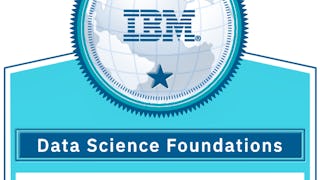Data is everywhere. From historical documents to literature and poems, diaries to political speeches, government documents, emails, text messages, social media, images, maps, cell phones, wearable sensors, parking meters, credit card transactions, Zoom, surveillance cameras. Combined with rapidly expanding computational power and increasingly sophisticated algorithms, we have an explosion of digital data around us. Privacy, ethics, surveillance, bias, discrimination are some of the obvious policy issues emanating from these data sources. But there is also incredible potential for better understanding the social world, and the potential to use data for good.In this course we will explore how data and digital material can be leveraged to have a better understanding of social issues. We will devote a substantial component of the course to explore the technical skills necessary to access and analyze data (aka programming in Python!), and best practices re: research design, and the practical knowledge we and others can produce using digital data and methods.



Empfohlene Erfahrung
Kompetenzen, die Sie erwerben
- Kategorie: Data Structures
- Kategorie: Data Collection
- Kategorie: Data Visualization Software
- Kategorie: Programming Principles
- Kategorie: Data Manipulation
- Kategorie: Seaborn
- Kategorie: Histogram
- Kategorie: Matplotlib
- Kategorie: Research
- Kategorie: JSON
- Kategorie: Web Scraping
- Kategorie: Data Science
- Kategorie: Research Design
- Kategorie: Data Ethics
- Kategorie: Python Programming
- Kategorie: Natural Language Processing
- Kategorie: Data Literacy
- Kategorie: Data Analysis
Wichtige Details

Zu Ihrem LinkedIn-Profil hinzufügen
September 2025
14 Aufgaben
Erfahren Sie, wie Mitarbeiter führender Unternehmen gefragte Kompetenzen erwerben.

In diesem Kurs gibt es 7 Module
Data is everywhere. From historical documents to literature and poems, diaries to political speeches, government documents, emails, text messages, social media, images, maps, cell phones, wearable sensors, parking meters, credit card transactions, Zoom, surveillance cameras. Combined with rapidly expanding computational power and increasingly sophisticated algorithms, we have an explosion of digital data around us. Privacy, ethics, surveillance, bias, discrimination are some of the obvious policy issues emanating from these data sources. But there is also incredible potential for better understanding the social world, and the potential to use data for good.In this course we will explore how data and digital material can be leveraged to have a better understanding of social issues. We will devote a substantial component of the course to explore the technical skills necessary to access and analyze data (aka programming in Python!), and best practices re: research design, and the practical knowledge we and others can produce using digital data and methods.In this module, we will introduce Python programming using Jupyter Notebook, accessible via Anaconda or Google Colab. It begins with setting up the environment and executing Python code. Learners will explore fundamental concepts such as printing values, identifying variable types, and working with different data types. The module covers statements, expressions, and operators, including arithmetic, comparison, and assignment operators. There will be a dedicated section on strings introduces string operations and manipulation. Logical and Boolean expressions, along with conditional statements (if, else, elif), will also be explored to understand decision-making in Python, including nested and chained conditionals. Additionally, user input handling will also be covered to enable interactive programming. The module concludes with an introduction to Markdown, helping learners document their work effectively in Jupyter Notebook.
Das ist alles enthalten
11 Videos3 Lektüren2 Aufgaben
The second module explores key programming concepts, beginning with built-in and user-defined functions to enhance code reusability and efficiency. It covers string methods, including splitting strings for text manipulation. Learners will also delve into list methods such as slicing, using the in operator for membership testing, and joining lists. Iterations, including loops, are introduced to automate repetitive tasks, followed by combining loops and conditionals to create dynamic and logical programs. The module concludes with practice exercises to reinforce these concepts and improve problem-solving skills.
Das ist alles enthalten
10 Videos2 Aufgaben
The third module focuses on the concepts of iterations, while loop and for loop in greater detail. We will specifically learn how to update variables, how to write while loops, execute infinite while loops and finishing iterations using “continue” statement. We will also look at writing definite loops using for statements. We will learn counting and summing iteratively going through loops. We will learn how to find out maximum and minimum elements, typically in a list, using loops. We will further go through iterating through lists and learn how to do debugging which is important as you do more advance programming.
Das ist alles enthalten
11 Videos2 Aufgaben
The fourth module focuses on handling and analyzing data efficiently. It begins with understanding relative file structures for accessing and organizing files. Learners will explore Pandas DataFrames, a powerful data structure for managing datasets, along with slicing techniques to extract specific data. The module covers summary statistics to describe datasets and methods for comparing differences between means. Visualization techniques using Matplotlib and Seaborn will be introduced, including histograms, scatterplots, and barplots for effective data representation. Finally, practice exercises will reinforce these concepts, enabling learners to apply data analysis and visualization techniques effectively.
Das ist alles enthalten
7 Videos2 Aufgaben
The fifth module delves into essential data structures and text processing techniques. It begins with tuples and dictionaries, exploring their properties and use cases. Learners will then cover list and dictionary comprehension, which provide efficient ways to create and manipulate data structures. The module introduces fundamental text analysis concepts, including counting words, calculating the type-token ratio, and analyzing word frequencies. Next, it covers tokenizing text and preprocessing, essential steps for cleaning and structuring textual data. Additionally, learners will practice reading text files to extract and analyze information. The module concludes with practice exercises to reinforce these concepts through hands-on experience.
Das ist alles enthalten
10 Videos2 Aufgaben
The sixth module delves into essential data structures and text processing techniques. It begins with tuples and dictionaries, exploring their properties and use cases. Learners will then cover list and dictionary comprehension, which provide efficient ways to create and manipulate data structures. The module introduces fundamental text analysis concepts, including counting words, calculating the type-token ratio, and analyzing word frequencies. Next, it covers tokenizing text and preprocessing, essential steps for cleaning and structuring textual data. Additionally, learners will practice reading text files to extract and analyze information. The module concludes with practice exercises to reinforce these concepts through hands-on experience.
Das ist alles enthalten
7 Videos2 Aufgaben
The seventh and final module introduces accessing and extracting data from the web. It begins with accessing databases via Web APIs, followed by constructing API GET requests to retrieve data. Learners will then explore parsing response texts and JSON files to extract meaningful information, such as counting the number of articles. The module also covers web scraping using BeautifulSoup, enabling automated data extraction from websites.
Das ist alles enthalten
8 Videos2 Lektüren2 Aufgaben
Auf einen Abschluss hinarbeiten
Dieses Kurs ist Teil des/der folgenden Studiengangs/Studiengänge, die von O.P. Jindal Global Universityangeboten werden. Wenn Sie zugelassen werden und sich immatrikulieren, können Ihre abgeschlossenen Kurse auf Ihren Studienabschluss angerechnet werden und Ihre Fortschritte können mit Ihnen übertragen werden.¹
Dozent

Mehr von Data Analysis entdecken
 Status: Kostenloser Testzeitraum
Status: Kostenloser Testzeitraum Status: Vorschau
Status: VorschauBall State University
 Status: Vorschau
Status: VorschauNanjing University
 Status: Kostenloser Testzeitraum
Status: Kostenloser TestzeitraumDuke University
Warum entscheiden sich Menschen für Coursera für ihre Karriere?





Neue Karrieremöglichkeiten mit Coursera Plus
Unbegrenzter Zugang zu 10,000+ Weltklasse-Kursen, praktischen Projekten und berufsqualifizierenden Zertifikatsprogrammen - alles in Ihrem Abonnement enthalten
Bringen Sie Ihre Karriere mit einem Online-Abschluss voran.
Erwerben Sie einen Abschluss von erstklassigen Universitäten – 100 % online
Schließen Sie sich mehr als 3.400 Unternehmen in aller Welt an, die sich für Coursera for Business entschieden haben.
Schulen Sie Ihre Mitarbeiter*innen, um sich in der digitalen Wirtschaft zu behaupten.
Häufig gestellte Fragen
To access the course materials, assignments and to earn a Certificate, you will need to purchase the Certificate experience when you enroll in a course. You can try a Free Trial instead, or apply for Financial Aid. The course may offer 'Full Course, No Certificate' instead. This option lets you see all course materials, submit required assessments, and get a final grade. This also means that you will not be able to purchase a Certificate experience.
When you purchase a Certificate you get access to all course materials, including graded assignments. Upon completing the course, your electronic Certificate will be added to your Accomplishments page - from there, you can print your Certificate or add it to your LinkedIn profile.
Yes. In select learning programs, you can apply for financial aid or a scholarship if you can’t afford the enrollment fee. If fin aid or scholarship is available for your learning program selection, you’ll find a link to apply on the description page.
Weitere Fragen
Finanzielle Unterstützung verfügbar,
 enthalten
enthalten
